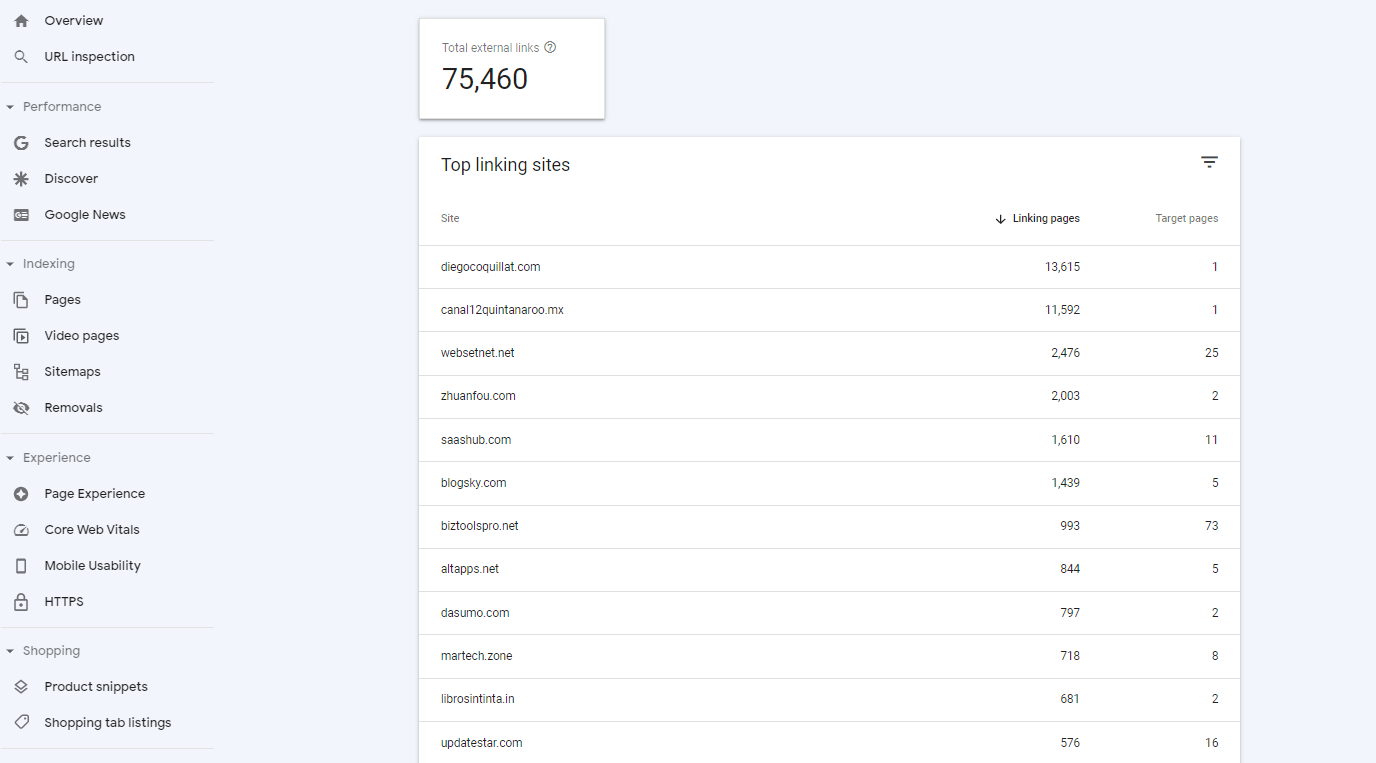
Understanding External Links: Comprehensive Guide with Top SEO Strategies

Understanding External Links: Comprehensive Guide with Top SEO Strategies
Disclaimer: This post includes affiliate links
If you click on a link and make a purchase, I may receive a commission at no extra cost to you.
External link
Contents
- External link definition
- Example of external link
- Difference between internal and external links
- Types of external links
- Are external links good for SEO?
- How do I find external backlinks?
- What are the external linking best practices?
- FAQ about external links
- Related articles
- References
External link definition
An external link is a hyperlink that directs a user from one website to a different website on another domain. These links connect related content, provide additional information, or reference sources outside the original website. External links are important for navigating the Internet and accessing a wider range of information.
Example of external link
An example of an external URL could be a link to a reputable news article or a research paper that provides additional context or evidence for the content on your page. For instance, linking to a study on www.researchsite.com from your health blog would be an external link.
In SEO, an external link might be used to reference a statistic or a related piece of content that supports the information on your page. For example, if you’re writing about SEO strategies, you might link to a page on www.seoauthority.com that discusses the latest trends in the industry.
An outbound external text link from https://mywebsite.com to https://anotherwebsite.com should be formatted like this[1] :
An outbound external image link, in this case, will look something like this:
Difference between internal and external links
Internal links are hyperlinks that direct users to another page within the same website or domain, helping with site navigation, improving site structure, and distributing page authority. For example, a link from the homepage to a blog post on the same site is an internal link.
External links, on the other hand, point to a page on a different website or domain. They provide additional information, reference sources, and connect to related content outside the site. An example of an external link is a link from a blog post to an article on a different website.
Key differences:
- Destination: Internal links keep users within the same website, while external links take users to a different website.
- SEO impact: Internal links help with site navigation and page ranking within the same site, while external links can improve the credibility and relevance of content by referencing reputable sources.
- User experience: Internal links enhance user experience by making it easy to find related content within the same site, while external links provide additional resources and information from other sites.
Types of external links
External links can serve different purposes:
Reference links provide additional information or context by directing users to authoritative sources or related content outside the original website.
Affiliate links are used in marketing; these links direct users to a product or service on another website. The original site earns a commission if the user makes a purchase through the link.
Social media links direct users to social media profiles or specific posts on platforms like Facebook, Twitter, Instagram, etc., to encourage engagement and sharing.
Resource links like links to tools, downloads, or other resources that might be useful to the user. For example, a tutorial page might link to a downloadable PDF guide or an online tool.
Citation links are used in academic and professional writing to credit sources of information, theories, or direct quotes from other websites.
Guest post links drive traffic back to the author’s own site, often as part of a content marketing strategy.
These types of external links are crucial for enhancing the credibility, usability, and reach of web content.
Are external links good for SEO?
Yes, external links are beneficial for SEO because they enhance the credibility and trustworthiness of your content by connecting it to high-authority, reputable sources. Search engines recognize this practice and may reward your site with higher rankings as it demonstrates that you provide valuable and well-researched information.
Incorporating external links thoughtfully and strategically offers the following advantages:
Improved credibility: Linking to reputable, high-authority websites can enhance the credibility of your own content. Search engines like Google recognize this practice and may reward your site with higher rankings.
Enhanced user experience: External links provide immense value to users by directing them to additional, relevant information that complements the content they are currently engaging with. This practice enriches the user experience, making your site a more valuable resource.
Relationship building: Linking to other websites can foster partnerships with other webmasters. They might reciprocate by linking back to your site, which can improve your site’s authority and traffic.
Link juice distribution: While linking out means sharing some “link juice,” it can actually be beneficial. By linking to high-quality content, you signal to search engines that your site is part of a valuable information ecosystem, potentially boosting your own SEO in the long run.
Natural link profile: Having a mix of internal and external links creates a more natural link profile. Search engines may view this favorably compared to sites that only use internal links.
How do I find external backlinks?
There are plenty of SEO tools to use when you need to find the list of external backlinks.
One of these tools is Google Search Console – a free tool designed by Google to help webmasters adjust their websites for Google’s search algos. If you have the website’s Google Search Console account at your disposal, you can browse to the Links section to see a big portion of the inbound external links the website has:

Unfortunately, the tool is unable to show all of the inbound external links, it only shows a sample of them. So, for the full list of backlinks, you will have to resort to other backlink checker tools like SEO SpyGlass .
For the full list of external URLs that your website links to, you’ll need to crawl your website with special SEO spyder software – WebSite Auditor .

What are the external linking best practices?
External links are vital tools for enhancing your website’s SEO and providing additional value to your users. By directing your audience to high-quality, authoritative sources, you can improve your site’s credibility, user experience, and search engine ranking. Here are some best practices for implementing external links effectively:
Link to reputable sources: Ensure that the external links you use point to trustworthy and authoritative websites. This boosts your site’s credibility and signals to search engines that you are referencing high-quality content.
Use relevant anchor text: The anchor text for your external links should be descriptive and relevant to the content of the linked page. This helps both users and search engines understand the context of the link and the value of the linked content.
Open links in new tabs: Set your external links to open in new tabs or windows. This keeps visitors on your site longer, improving user engagement and reducing bounce rates, which are positive signals for SEO.
Avoid excessive linking: While external links are beneficial, too many can distract users and potentially dilute your page’s link equity. Use them judiciously to maintain a balance between external references and your own content.
Avoid competitors’ sites: Refrain from linking to your direct competitors. Linking to competitors can drive traffic away from your site and potentially strengthen their SEO at the expense of your own.
Check for broken links : Regularly audit your external links to ensure they are still valid and not leading to 404 errors. Broken links can negatively impact user experience and SEO rankings.
By following these best practices, you can leverage external links to enhance your site’s SEO, build credibility, and provide a better user experience.
FAQ about external links
What are external links?
External links are hyperlinks that direct users from one website to a different website on another domain. These links provide additional information and reference sources, and connect related content from other sites.
What is the difference between internal and external links?
Internal links point to other pages within the same website, helping users navigate and search engines index the site more effectively. External links, on the other hand, direct users to different websites, providing additional resources and improving the credibility of your content by referencing authoritative sources.
What is an example of an external link in SEO?
An example of an external link in SEO would be a blog post on a marketing website that includes a link to a research article on a different domain, such as a study from a reputable analytics firm.
Are external links beneficial for SEO?
Yes, external links are beneficial for SEO. They can enhance your site’s credibility by linking to authoritative sources, improve user experience by offering additional resources, and foster relationships with other webmasters, potentially leading to reciprocal links. These factors can help improve your site’s search engine ranking.
What are some best practices for using external links?
Some best practices for using external links include linking to reputable sources, using relevant anchor text, and setting links to open in new tabs. It’s important to avoid excessive linking and regularly check for broken links. Additionally, avoiding links to competitors’ sites is also a recommended strategy.
Related articles
Link Authority: How To Improve It For SEO
9 Actionable Link Building Tactics for 2023
References
1. https://www.w3schools.com/html/html_links.asp
Also read:
- [New] In 2024, Decode Audio Formats Your Complete SRT to Other File Guide
- 1. Slash Your Fuel Costs with Savvy Strategies: Insights From Massmail Software's Guide
- Complete Bundle of MacXDVD Professional Edition with Full Licensing – Complimentary Migration
- Easy Installation of Epson XP-245 Printer Driver on Windows 7/8/10 Systems
- How to Upgrade Apple iPhone SE (2020) to the Latest iOS Version? | Dr.fone
- In 2024, From Zero to Hero Steps to Construct Your Channel's Backlinks
- In 2024, Read This Guide to Find a Reliable Alternative to Fake GPS On Asus ROG Phone 7 Ultimate | Dr.fone
- Perceiving Beyond Understanding AR's Impact for 2024
- Quick Fix for Error Code 0X800F0954 - Effective Solutions Now!
- Shield Yourself From Currency Exchange Cons Deceptions: Mastering Safe Usage of MT4 Duplicators
- Solving the 'Missing Rockaldll.dll' Error Effectively
- Top 13 Strategies for Crafting Irresistible Email Headlines & Effective Sales Scripts with MassMail
- Unveiling Key Benefits and Challenges: A Comprehensive Guide to CFDs Trading on MetaTrader T Platforms
- Wiederholung Von Wortdokumenten: Drei Effiziente Ansätze Zur Dateiaufnahme
- Title: Understanding External Links: Comprehensive Guide with Top SEO Strategies
- Author: Scott
- Created at : 2025-01-17 07:05:40
- Updated at : 2025-01-21 01:31:06
- Link: https://win-top.techidaily.com/understanding-external-links-comprehensive-guide-with-top-seo-strategies/
- License: This work is licensed under CC BY-NC-SA 4.0.
